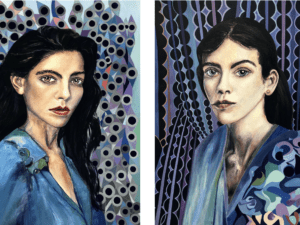Deborah Moss is a New Zealand-based artist interested in expressing an intimate connection with the natural world and its transcendent quality through colour and emotive mark making to convey the sensation of being immersed in a place. Moss exhibits in New Zealand and Australia, and her work is held in numerous international private collections.
A: In Issue 104 of Aesthetica, we feature Where Memory Sets Forth. What is the inspiration behind this piece?
DM: That work was part of a series I created for an exhibition in 2021 called Moments of Light. It’s a type of rhythmic ode to the gardens surrounding my studios and the memory of walking among a chorus of flowers in full bloom, which is awe-inspiring.
A: You’ve mentioned that you’re interested in “expressing an intimate connection with the natural world and its transcendent quality”. Are all of your works based upon real places, or do some of them come from your imagination?
DM: Many of my works are derived from observations or experiences in nature – that’s the “key” to my creative process. With every piece there’s always a generous space left for imagination and intuition along the way. This means the works can have an undercurrent of stories or themes I may not have anticipated as they develop. For me, painting is a type of “visual diary of the subconscious”, often revealing surprising insights.
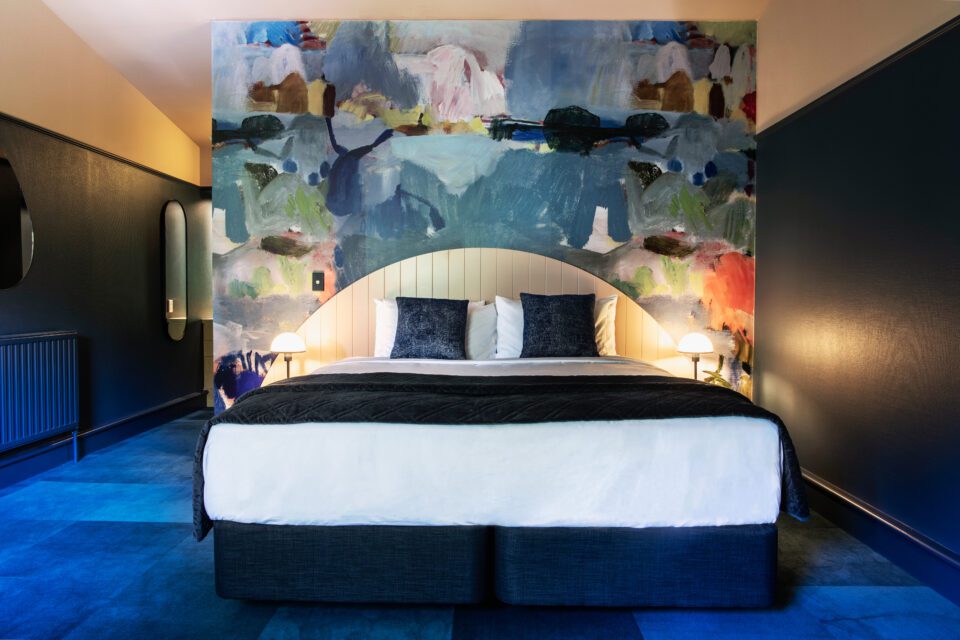
A: You were recently commissioned by a hotel in Queenstown to create artworks that were made into bespoke wall coverings for their guest rooms. How did that collaboration come about and what is it like to see your art in this environment?
DM: An interior design company called Undercurrent was responsible for the redesign of The Central Private Hotel in Queenstown which is part of the international Naumi Hotels group. They approached me about creating works which would be transformed into wallpaper for different-themed guest rooms. Naumi Hotels are known for creating architectural and artistic cutting-edge spaces and I was thrilled to be involved.
Seeing my art enlarged into mural-size feature walls in the hotel’s guest rooms is still a little surreal. I love the way the scale creates a sense of wonder and whimsy and the whole hotel design is really inspired – it was the 2021 New Zealand Grand Prix winner for the 35th Dulux Colour Awards.
A: You’ve mentioned an interest in working sustainably, how do you incorporate that into your studio practice?
DM: I avoid solvents and predominantly use water-based paints. Last year I phased out using cotton canvas and replaced it with linen, which is kinder on the environment. After a lot of searching I found a reliable packaging material made from 100% recycled materials which is an alternative to conventional bubble wrap and I also use eco-friendly tapes. The interiors of my studios have some recycled materials and I used natural paints which are VOC-free. I’m always looking for ways to reduce waste and lessen my footprint.
A: When embarking upon the creation of a painting, do you imagine where and in what context it may eventually be shown, or is the inspiration of the natural world the only driving force?
DM: There’s often practical considerations I take into account such as size and when working towards either a group or solo show I visualise how works relate to the space they’ll be shown in; however my primary focus is to stay as closely connected to the work itself.
If I allow too many external factors to influence the next mark I make on my canvas, it will interfere with the flow and natural progression of the work. The more I stay in the zone and try to exclude external influences, the better the outcome and it makes for a much more efficient and pleasant studio experience.
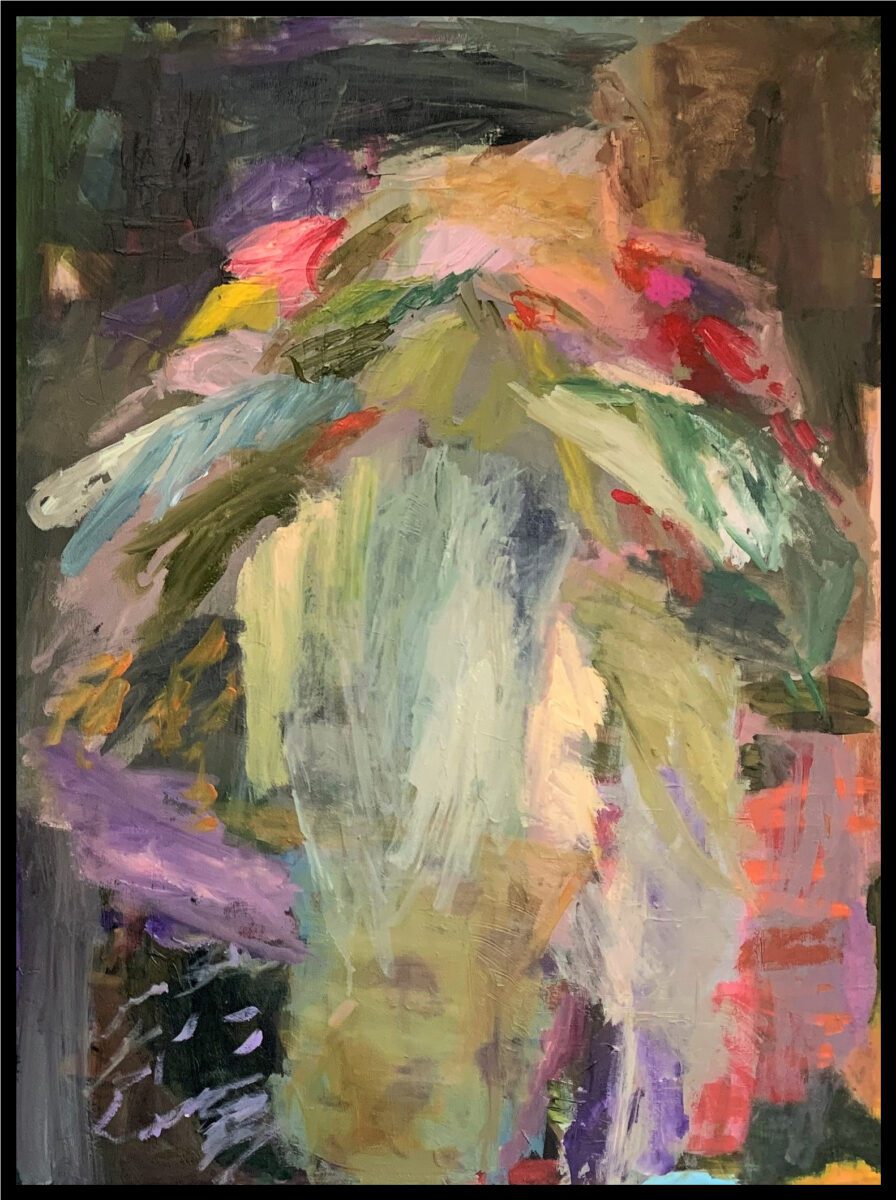
A: The Sacred Bower was part of the Garden Delight group exhibition in Taranaki, New Zealand in October and November. How was this experience for you, and how did it differ from exhibitions pre-Covid-19?
DM: I found it really grounding to have exhibitions lined up during such an unpredictable time. The focus and timelines helped distract from the alarming state of world events and ensured I kept a regular studio routine – in fact 2021 turned out to be my busiest year yet.
I couldn’t travel to any of the exhibitions I took part in because of lockdown restrictions but that was the only real difference. I’m fortunate that I have representation outside my city so some of my galleries weren’t in lockdown at the same time or found alternative ways to showcase work. I did have moments where I questioned the validity of what I was doing when things seemed so dire but reached the conclusion that the world desperately needs art right now so it was a case of digging deep and feeling grateful for the ability to keep working when others couldn’t.
A: Do you feel a kinship with other artists across New Zealand, particularly those who explore the beauty of the natural world?
DM: Definitely! I love following the work of other artists who are passionate about the environment in New Zealand. There are very talented creatives working in a wide variety of mediums: photographers, ceramicists, sculptors, jewellers, painters and fibre artists who produce really engaging pieces. We live in such a beautiful country, so it seems natural that it inspires our artists to reflect that in their work and to be mindful of that by cultivating sustainable practices.
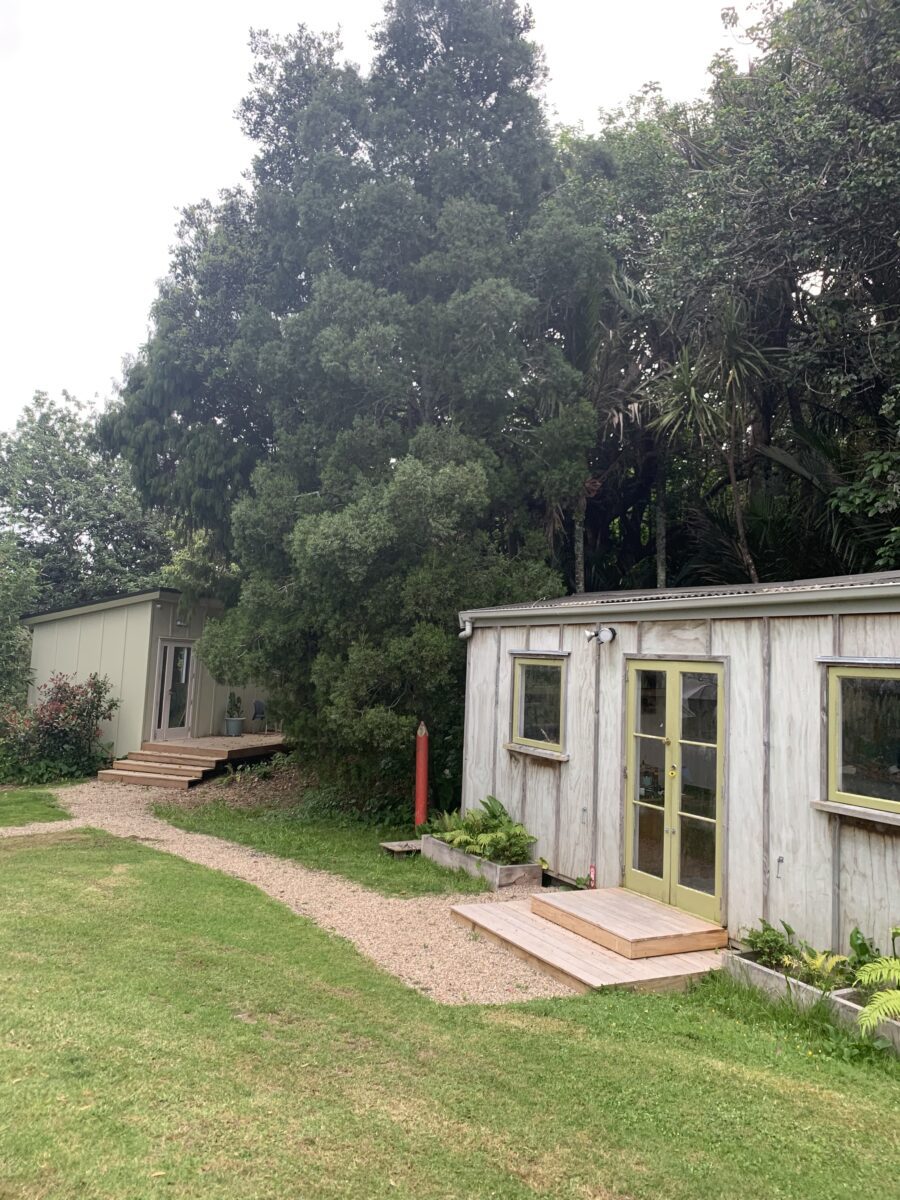

A: What is a typical day like for you? Tell me about your rural property near North Auckland: where is your studio located vis-à-vis your house and the surrounding gardens and forest?
DM: We share the land with an array of animals – sheep, pigs, alpacas, ducks, cockatiels, dogs and a cat, so a considerable chunk of the day involves caring for them in some capacity. I like to get on top of admin in the morning then head off to my studios. The first one was built about six years ago and is a minute’s walk from home, nestled into the base of the forest.
As my work scaled up in size and volume, I desperately needed more storage and working space so last year we built another studio which is a stone’s throw from the original one – enabling me to easily go between the two. There are several gardens around the property, including a mix of native and exotics, and I love to walk around them when I take mini-breaks from studio work and need fresh inspiration.
Weather permitting, I’ll include a walk into the forest and enjoy sitting and watching the light, listening to the birdsong and typically being amazed by some new discovery. Then it’s a trip to the school bus stop and helping with after-school activities. After dinner I’ll return to the office and respond to any admin matters, check out socials and if not too tired do a bit of reading or watch TV.
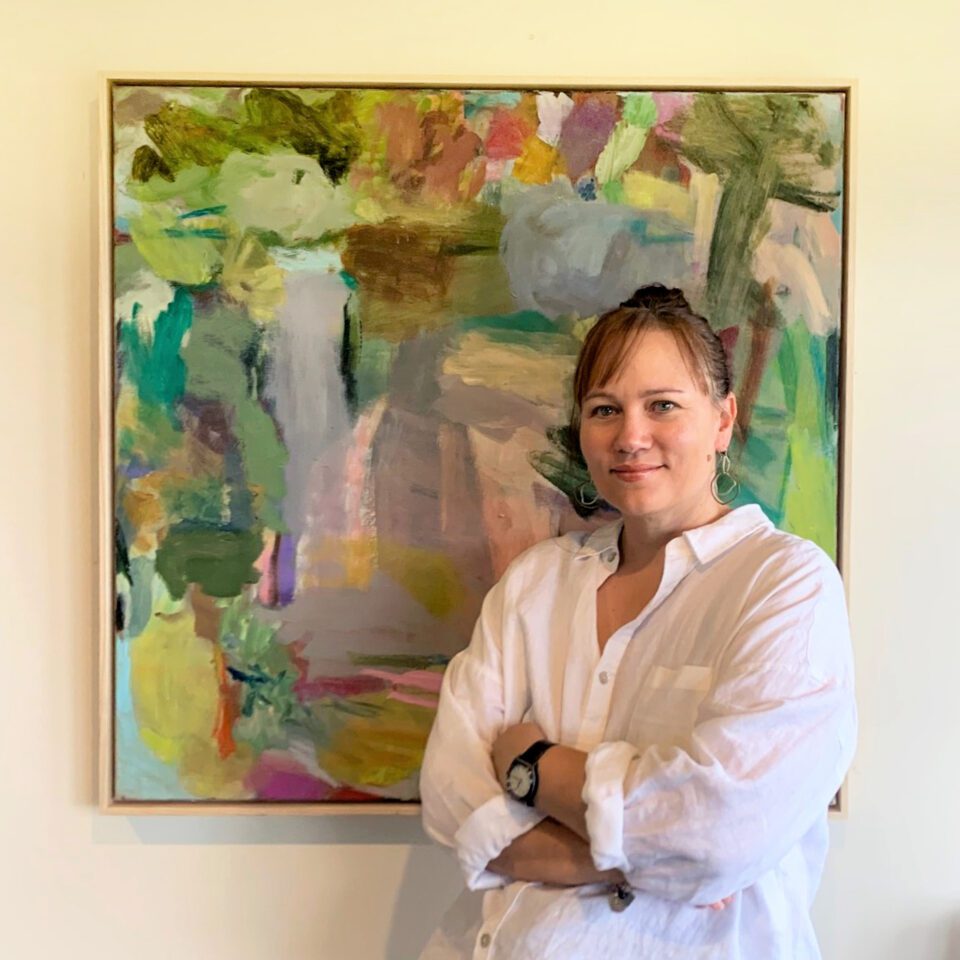
A: Have you always lived in this kind of environment?
DM: My formative years were spent in California – my family moved there from New Zealand when I was three because of my Dad’s work, so my early memories are very American and suburban-based. My adolescent and early adult years included quite a lot of travel but again my main living environment was city-based. After our son was born we wanted more space for him to explore and a different lifestyle so set about our quest to “escape to the country”. It took us a couple of years of hard searching but we finally found a place that felt right.
A: You are the co-founder of Planting Hope; every time one of your artworks is sold, a native tree is planted on your property. What was the inspiration behind this project?
DM: Living and working next to a forest has given me a real insight into how complex and beautiful trees are, a deep appreciation for the role they play in our ecosystem and respect for the significant impact they have on our wellbeing. Five minutes of forest bathing and you step out refreshed and replenished.
It has also made me feel very protective towards forests and I wanted to do something in addition to representing the beauty of the natural world through art. We had a limestone based pond that was on the land which is significant in size and depth and has been used as a swimming hole but was devoid of any surrounding flora and it just seemed like the right place to begin the project.
Through sharing images of planting I can bring in messages about conservation in a positive light and feel like I am giving back to the source of much of my inspiration. I’ve had the great honour of meeting Dr Jane Goodall twice on her visits to New Zealand and each time she really instilled the idea that everyone can make a difference and have a role to play in transforming the world – no matter how big or small. What we do on a daily basis creates ripples and her words and example have really encouraged me to keep “planting hope”.
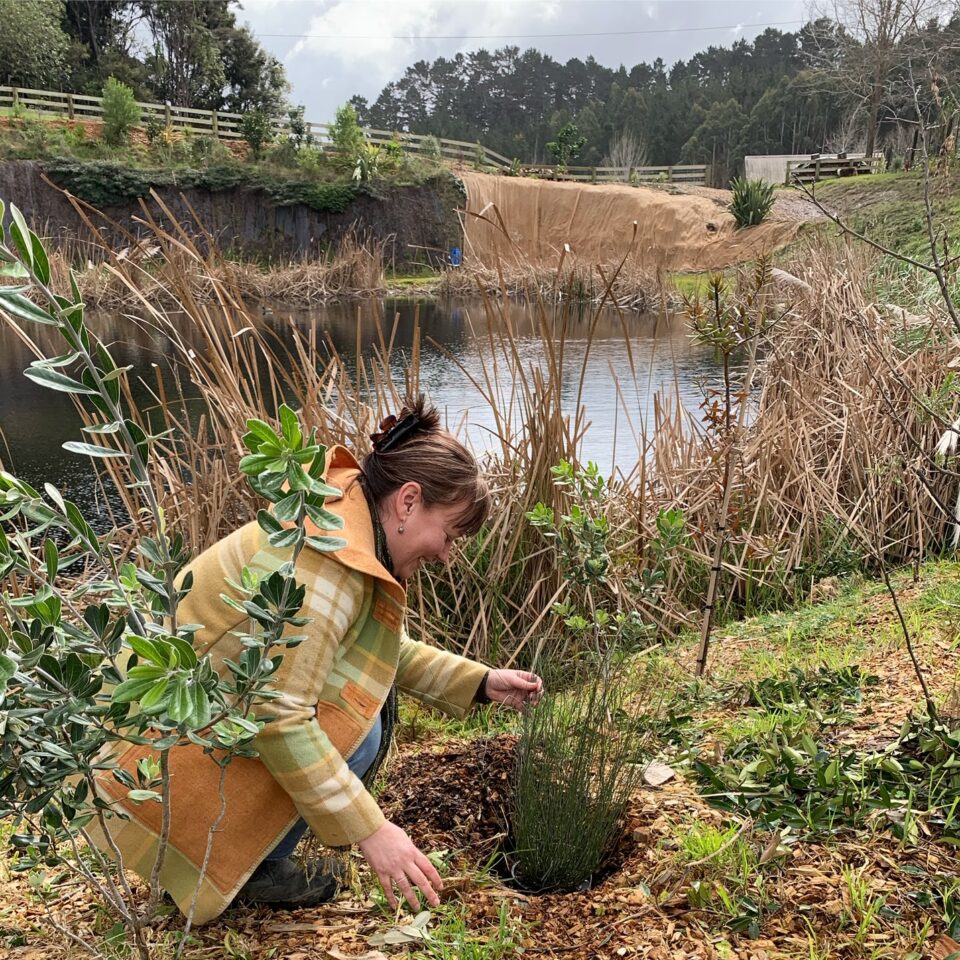
A: What practicalities are there to consider when selecting a specific location and planting a tree?
DM: Seasons play a big factor for example planting in relation to summer sales of artworks will take place in Autumn when it’s less dry. We have good natural shelter belts in a new valley where we’re planting so there’s protection from wind. Our pond has an irrigation system so we can easily water the plants which is crucial. Finally, choosing good specimens to give trees an optimal start. We only plant natives in this initiative as they’re adapted to the conditions and natural to the environment which attracts native birds and insects.
A: Have you seen the effects of this project on other plants and animals in the area?
DM: The transformation of the area has been amazing to witness – there’s a walking trail around the perimeter of the pond, with planting around the banks. I love to walk around there and see many bumble bees feasting, birds setting up nests and dragonflies whizzing by. We’ve had wild birds visit and everything seems to be really flourishing.
A: What are the long-term plans for Planting Hope?
DM: To keep spreading the message. The planting has far exceeded any expectations I had when I started and it’s so rewarding to watch the growth and transformation. I’ve now fully planted around the largest pond on our land and have started to rewild other areas on the farm. It has become a family project as my husband and son have been heavily involved and it would be wonderful to continue to have more people come and assist with the planting and spend time in nature.
I’ve had some artists who follow me on social media say they’ve been inspired to plant a tree and others have said they’d love to do something similar. Ultimately it would be great to see more initiatives pop up – if artists can’t plant a tree or fund planting, perhaps committing to some form of helping the environment via conservation programmes. There’s some great projects and organisations out there.
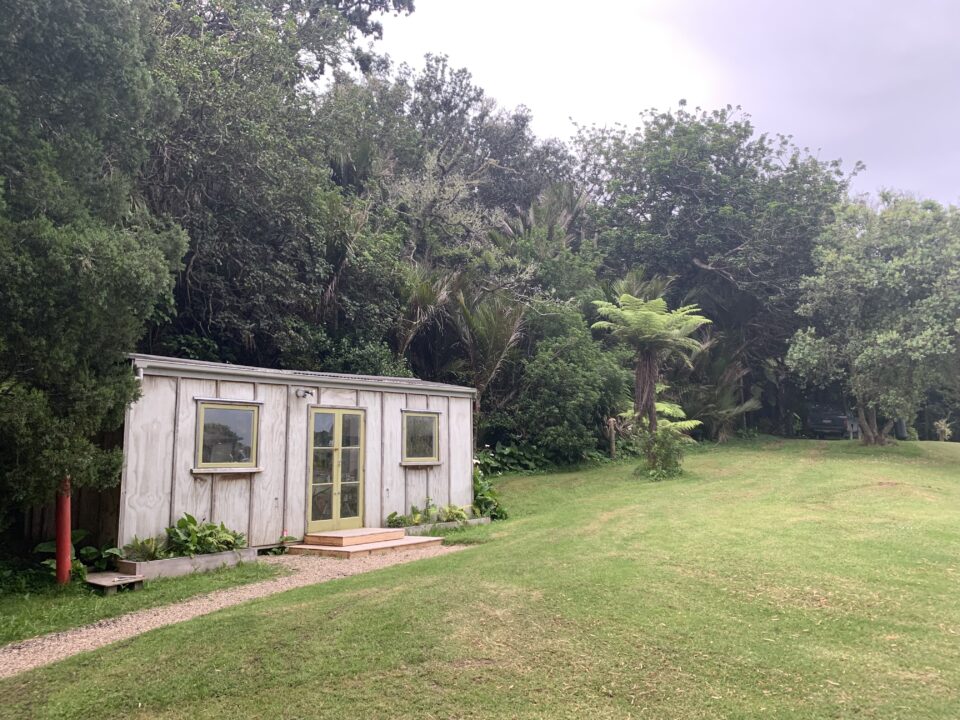
A: Do you travel around New Zealand for inspiration, or is there still so much to glean from the area around your home?
DM: With its gardens, forests (pine and native), prolific birdlife, ponds, a rural outlook and generous hilltop skies, I feel I’ve only scratched the surface of what I can tap into at home for creative inspiration. When I have the opportunity to travel I inevitably find something that captures my attention and I want to respond to – recently that included waterfalls on the North Island and rivers on the South Island which influenced some semi-abstract paintings.
A: How do you think your practice will evolve over the next five years?
DM: The last few years have been solely focused on painting – prior to that I had created some sculptural pieces (indoors and outdoors) and I’d like to explore three-dimensional works further. I hope to keep experimenting and learning – perhaps some more collaborative work. It would also be really interesting to do some residencies and see how foreign environments impact my work. I enjoy the process of working in a series and the evolution of a body of work so I definitely see more solo shows in the mix.
deborahmossart.com I Instagram: @deborahmoss_art
All images courtesy of Deborah Moss.
The work of Deborah Moss appears in the Artists’ Directory in Issue 104 of Aesthetica. Click here to visit our online shop.



